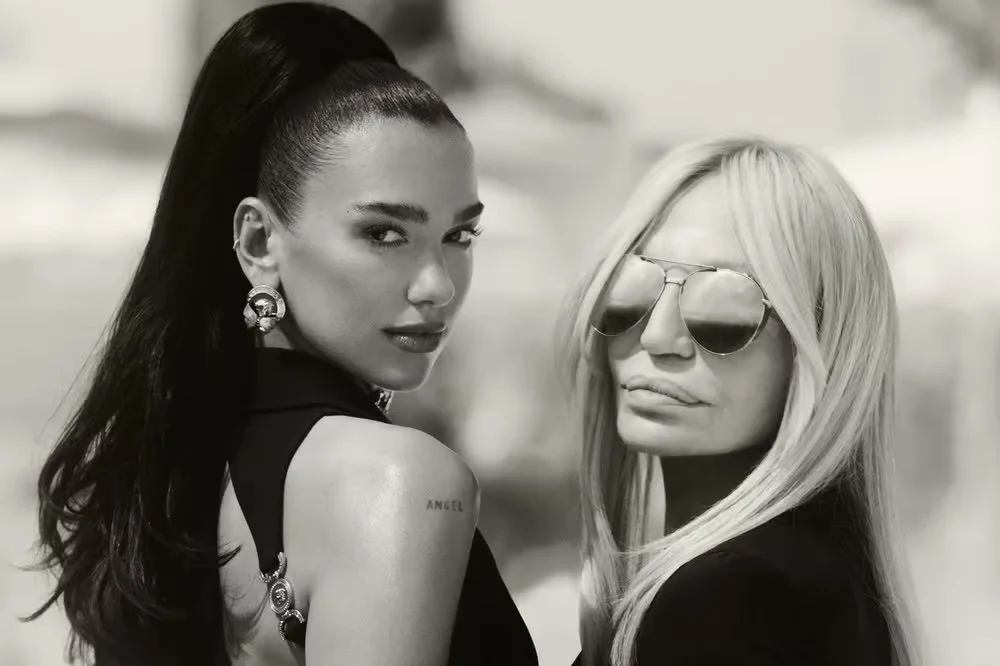Five for Fifty: Five Women Who Have Shaped the Fashion Industry since the 1950s
Words by Vera Fortun Marco
Fashion has always been a tool for women to express themselves throughout the decades: from the knee-length rebellious flapper dresses in the 1920s to the masculine work suits embraced in the 90s. So, in honour of Women’s History Month I present to you five women that have influenced fashion through their designs since the 1950s.
Vivienne Westwood, 1970s
Vivienne Westwood, often referred to as the mother of punk fashion, rose to fame amidst the rebellious atmosphere of 1970s Britain. Alongside her partner Malcolm McLaren, Westwood opened the “sex” boutique in 1974. This space became the epicentre of punk music and fashion which were brought together in Westwood’s anarchic designs, that would then become the foundation of the punk aesthetic.
Throughout the years, Vivienne Westwood became synonymous with non-conformity and unapologetic artistic expression, extending far beyond the punk aesthetic.
Today, the brand has drifted from the ‘pure’ punk style. Gaining inspiration from other forms of artistic expression like ballet, which have also become increasingly popular on social media, their designs have become more trendy, and appealing to a younger non-punk audience. However, Westwood’s essence remains in the details of their newest pieces.
Carolina Herrera, 1980s
Carolina Herrera’s rise to the Fashion Hall of Fame was completely different from that of Vivienne Westwood.
In 1980 Herrera joined the International Best Dressed Hall of Fame due to her classic, elegant style. A year later with the encouragement of Vogue Editor Diana Vreeland, Carolina Herrera presented her first collection. The collection exceeded all expectations drawing the attention of renowned figures like Caroline Kennedy.
Since then. Carolina Herrera has created iconic pieces with the goal of making the woman of today “feel confident, modern and above all else beautiful”. Thus, making Carolina Herrera one of the first brands to embrace the notion of fashion made by women for women.
Donatella Versace, 1990s
Donatella Versace took over the Versace house after her brother’s murder in 1997.
By then, the brand had already established itself as bold and innovative, particularly when it came to its choices of patterns and fabrics. Donatella had also established an image for herself in the media.
Despite her brother Gianni Versace being the designer, Donatella was Versace. She would accompany her brother to many public appearances, wearing some of the brand’s pieces, unintentionally becoming the face of the brand. When the time came for her to take over the brand’s designs, she was able to not only maintain her brother’s essence but to heighten the Versace feel. To this date, we continue to be awed by Versace’s originality and its ability to adapt to today’s popular culture, as well as Donatella’s ability to build a personal rapport with the fashion industry.
We can only hope that after releasing her final collection this year, her replacement will be able to fill her shoes and carry on the vivacity of the Versace brand.
Stella McCartney, 2000s
As shown by Vivienne Westwood, music and fashion are closely intertwined. A union that has given us the iconic Stella McCartney.
The daughter of Beatle, Sir Paul McCartney, revolutionised the fashion industry with the introduction of faux fur and leather. Being raised as a vegetarian Stella McCartney employed fashion as a way of promoting animal rights, stating that the fashion industry’s obsession for leather and fur was purely conventional, and really… not all that.
Her fight for more sustainable fashion did not come without challenges, especially for her financial growth. The designer herself admitted that her fashion business would be five times bigger if it didn’t commit to its sustainable ethos.
Nonetheless, Stella McCartney has succeeded in making a name for herself in the fashion industry, providing us with some of the most creative designs on the 2000s red carpet. For instance, the illusion dress worn by Kate Moss, Miranda Kerr and other celebrities, is one of the few Y2K designs that we would all still gladly wear today.
Chemena Kamali, today
Chemena Kamali has taught us that it is never too late to make an impact. At 44 years old Chemena Kamali has recently become the Creative Director for the brand Chloé. She has worked for large fashion brands for two decades prior, including Chloé itself. But it wasn’t until the past years that the designer was able to showcase as the head of a big name in the fashion industry.
Her styles look into the past and the future of the brand, giving the traditionally conservative Chloé a fresh and innovative allure. Fun shapes and flowing fabrics convey a new era of creativity for Chloé and we couldn’t be more excited to see what Kamali will come up with next!





